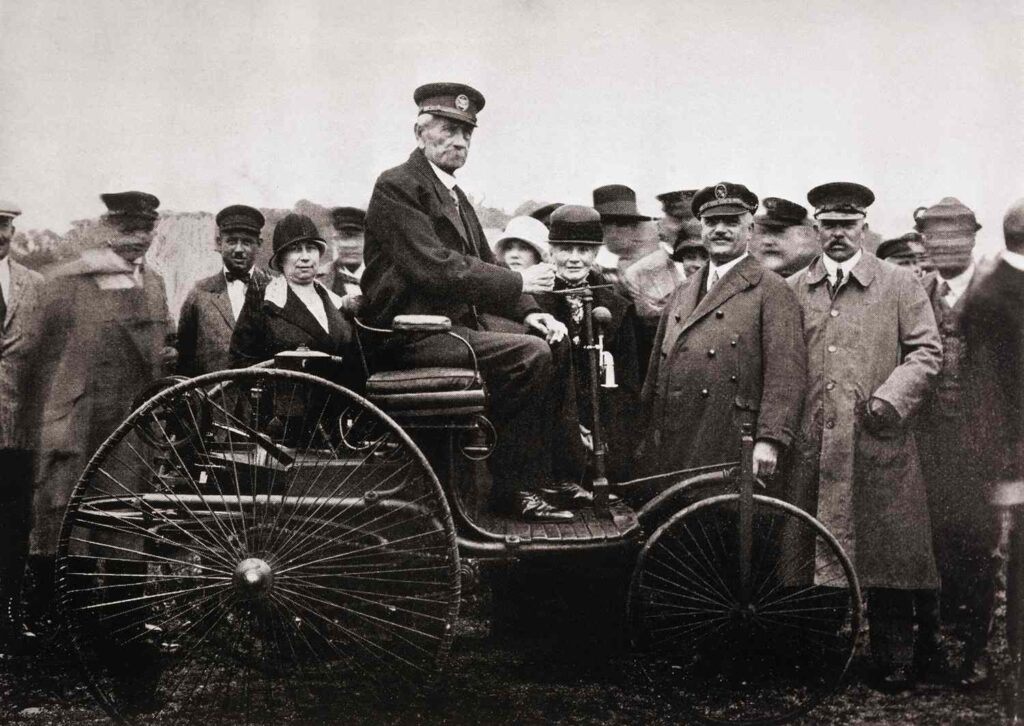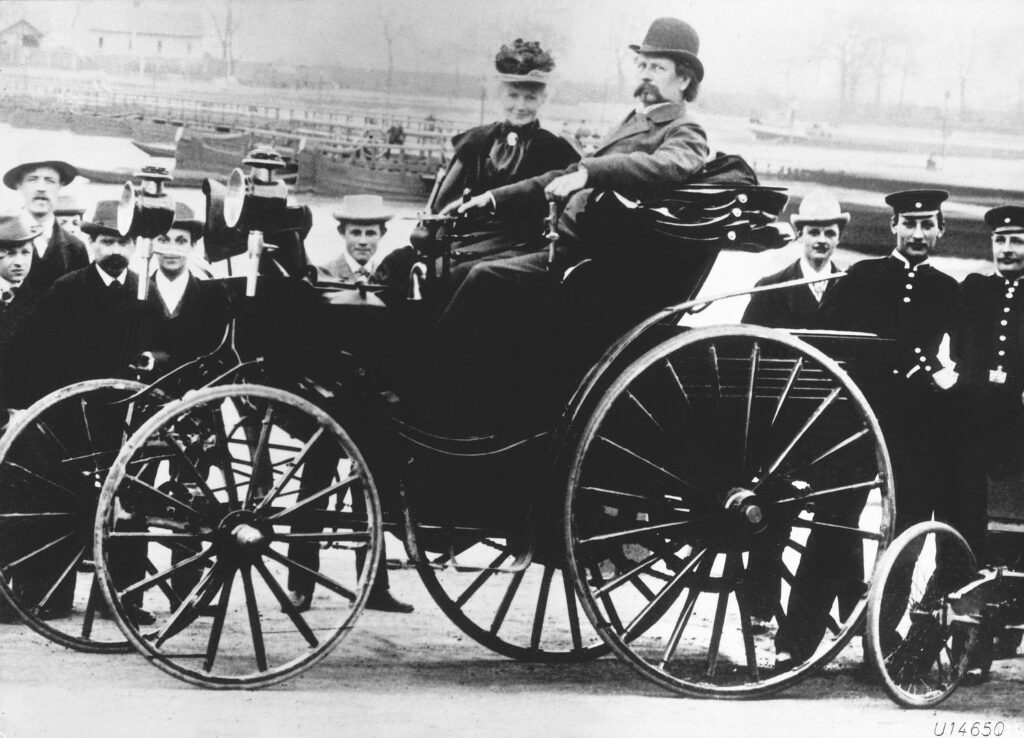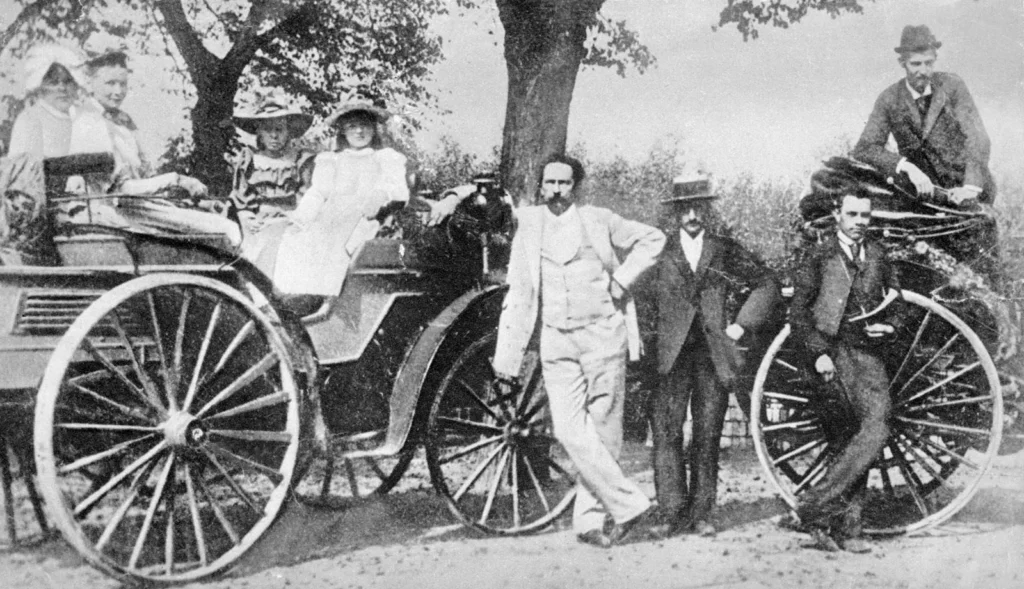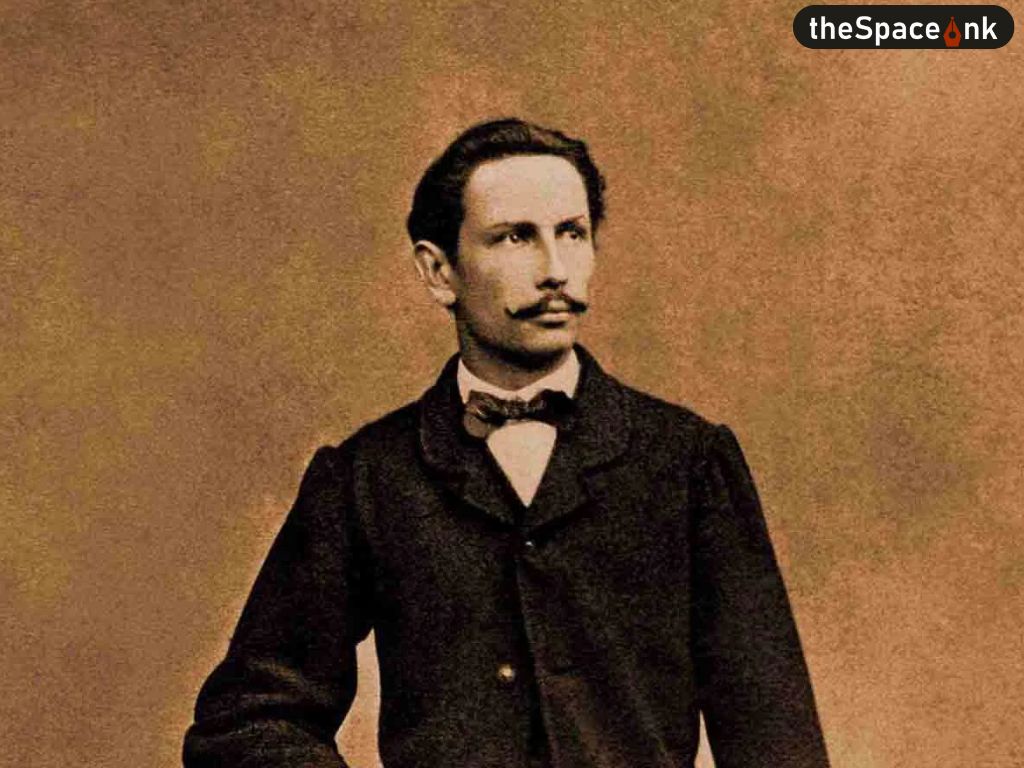(Karl Benz)
How one undaunted inventor — and his equally fearless wife — jump-started the age of the automobile.
“The love of inventing never dies in a real inventor.” — Karl Benz
Before cars became part of everyday life — before traffic lights, road trips, or the phrase “fill ’er up” — one man in Germany was sketching an idea so bold it sounded ludicrous. His name? Karl Benz, the dreamer who built the first true automobile and changed how humanity moves.
He didn’t just invent a machine. He reinvented motion.
Karl Benz wasn’t born with an engine waiting in the garage. Born on 25 November,1844 in Karlsruhe, Germany, he lost his father — a locomotive driver — at age two. His mother prodded him toward education, and by fifteen he was studying mechanical engineering at the Karlsruhe Polytechnic, one of the youngest in his class.
He graduated during the boomtime of the Industrial Revolution, when gears, steel, and steam were ruling the world of public transport. But Karl was chasing something more intimate: freedom of personal movement.

Early ventures were washouts. His first business partner focussed solely on profit, not progress, and their company failed. Others followed. Each time, Benz picked himself up, rebuilt, and tried again. What kept him going wasn’t money or pride — it was obsession. He wanted to make a carriage move without horses.
In the late 1870s, the idea of a gasoline engine was practically heresy. Steam was king; bicycles were the future. But Karl Benz saw a different path.
In a cramped workshop, with tools he built with his own hands, he designed a compact one-cylinder engine that could fit on a light frame. He tinkered endlessly with ignition systems, gears, and fuel mixtures. One piece at a time, he assembled his first prototype — the Benz Patent-Motorwagen.
“Karl might have built the first car, but it was his wife Bertha Benz who proved it worked.”
In January 1886, he received patent DRP No. 37435 for his “vehicle powered by a gas engine.” The contraption had three wheels, spindly spokes, and a top speed of 10 mph. People laughed. They called it a menace. But when Benz pulled the starter cord and that single cylinder sputtered to life, he had done something no one else had: he had made sure that fast movement no longer depended on reins and rails.
“You can’t prove the future by standing still.” — Bertha Benz (in spirit). Karl might have built the first car, but it was his wife Bertha Benz who proved it worked.
Also Read: Remembering Robert Redford
In August 1888, without telling her husband, Bertha and her two teenage sons set out on a daring 65-mile trip from Mannheim to Pforzheim in the Motorwagen No. 3. No roads. No maps. No gas stations. Just plain courage and curiosity.
When a fuel line clogged, Bertha cleared it with a hatpin. When a wire frayed, she tied it back with her garter. She stopped at an apothecary in Wiesloch to buy ligroin, a cleaning solvent that served as fuel — making that pharmacy the world’s first gas station.

Crowds gathered as she rolled through towns, children ran alongside, and horses bolted at the sight of the strange, sputtering machine. When she arrived in Pforzheim, dusty but triumphant, she telegraphed her husband: We made it.
That trip didn’t just test a car; it announced a new era. Overnight, the Benz name catapulted from curiosity to legend.
After Bertha’s historic journey, orders started pouring in. The company Benz & Cie. grew from a small workshop into one of Germany’s largest manufacturers. By the early 1890s, Karl Benz had become a household name.
“When he died in 1929, the automobile had become an indispensable companion for millions around the world— proof that his wild dream had rolled right into reality.”
But he wasn’t alone in the race. A few towns away, Gottlieb Daimler and Wilhelm Maybach were building their own engines. The rivalry was fierce but healthy — competition that accelerated progress.
Decades later, long after both men had passed, their companies merged to form Mercedes-Benz, a name that still defines automotive excellence.
Karl lived long enough to see paved roads, motor races, and cities reshaped by his invention. When he died in 1929, the automobile had become an indispensable companion for millions around the world— proof that his wild dream had rolled right into reality.
Karl Benz’s story isn’t just about metal and mechanics. It’s about grit and resilience.
Also Read: Ray Bradbury: A Reminiscence
He was a man who refused to quit — through bankruptcies, ridicule, and nights when his engine refused to start. He wasn’t chasing fame; he was solving a problem.
He built with precision but thought with imagination. His invention wasn’t a luxury toy; it was a chariot to move humanity forward.

In the span of one lifetime, he watched his idea grow from a sputtering three-wheeler to a worldwide industry. His journey reminds us that every revolution starts small — often in a workshop, with one stubborn idea that refuses to die.
Today, more than 1.4 billion cars roll across the globe. Roads crisscross continents, and mobility defines modern life. Yet it all traces back to Karl Benz’s patience, persistence, and a simple belief: machines could make life freer.
“Every time you turn a key, press a start button, or feel the hum of an engine, you’re touching a piece of his legacy.”
“A motorcar is a symbol of freedom, and Karl Benz gave us that freedom.”
Every time you turn a key, press a start button, or feel the hum of an engine, you’re touching a piece of his legacy.
Benz didn’t just build the first car. He gave the world the privilege to move — to chase horizons, to connect cities, to create motion that never stops.
A few fascinating footnotes from the road to history.
Also Read: Remembering Munshi Premchand
Did You Know?
Bertha Benz’s 1888 route is now the Bertha Benz Memorial Route, a 120-mile scenic drive through southwestern Germany.
The Benz Patent-Motorwagen’s single-cylinder engine produced 0.75 horsepower — just enough to make history.
The Wiesloch pharmacy where Bertha refueled is officially recognized as the first gas station in the world.
Karl Benz’s original workshop still stands in Mannheim — now a museum honoring the birth of the car.
Photo Courtesy: Britannica, Wikimedia Commons, ThoughtCo, CarParts.Com
A wanderer in words and wilderness, Koushik writes and translates to see the world — and himself — with mindful clarity.








